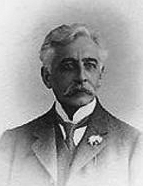

Basically, Bensaúde proved that the Portuguese nautical documentation of the late 15 th and early 16 th centuries, namely the solar tables and the technique of using them to calculate latitude at sea, had nothing to do with Regiomontano ’ s works, nor had they arrived on the Peninsula by the hand of Martin Behaim. The Munich text – today known as the Munich Nautical Regiment – is the oldest printed Portuguese nautical document and the solar tables it contains originate from Abraham Zacuto ’ s Almanach Perpetuum , translated from Hebrew into Latin by José Vizinho and published in Leiria in 1496. T his places them in an Iberian astronomical tradition of Arab origin, which passed through the court of Afonso X and reached the 15 th century via peninsular astronomers, some of them of Jewish origin, who sat at the court of D. João II.
Joaquim Bensaúde ’ s most important studies in the early decades of the 20 th century centred on nautical science and astronomy, benefiting from a thorough knowledge of mathematics, which he learnt as part of his engineering training. And he certainly benefited from his experience in Central Europe and his command of German, French , and English, which facilitated his access to libraries and allowed him to publish his work in a language more accessible to European historians, to whom he wanted to show Humbold ’ s errors. The specific nature of these studies and the required ancillary knowledge led Reis Torgal to classify him in a group of historians specialising in Portuguese nautical science ( História da História … , vol . I, p. 229 et seq.). In fact, the subject required specific knowledge, which Bensaúde mastered better than anyone else, but above all , he was motivated by the idea of revealing a new dimension of Portuguese nautical knowledge, which underpinned the ocean voyages of the 15 th and 16 th centuries.
This work is financed by national funds through FCT - Foundation for Science and Technology, I.P, in the scope of the projects UIDB/04311/2020 and UIDP/04311/2020.
